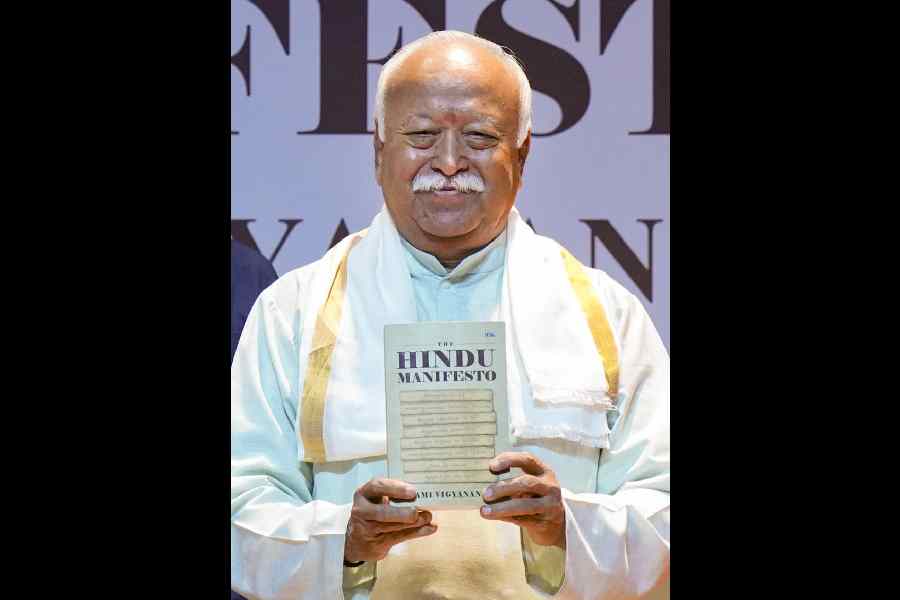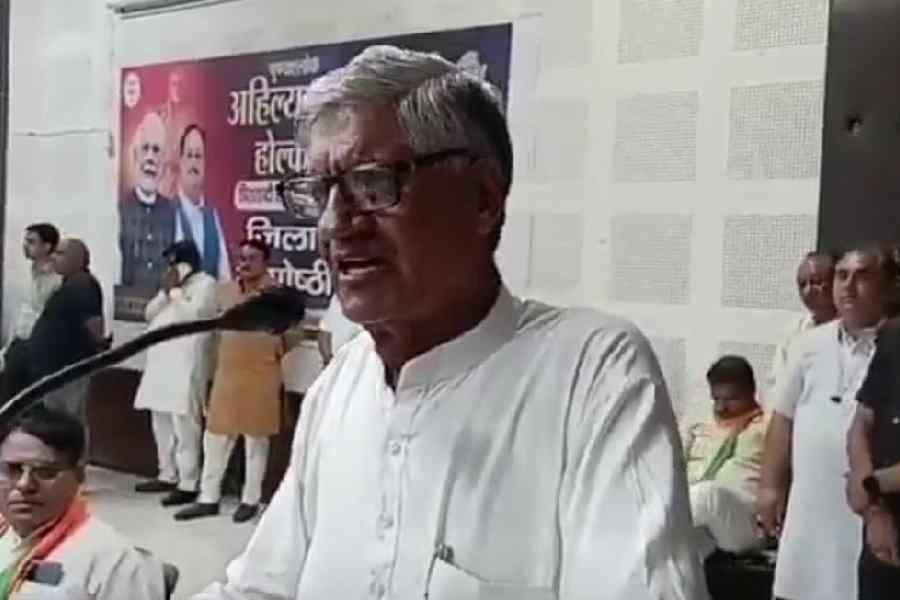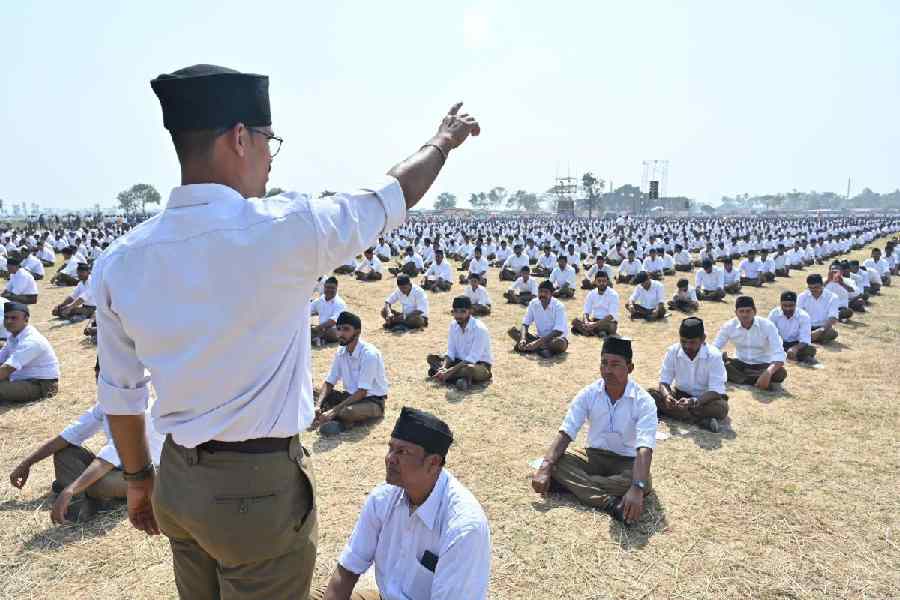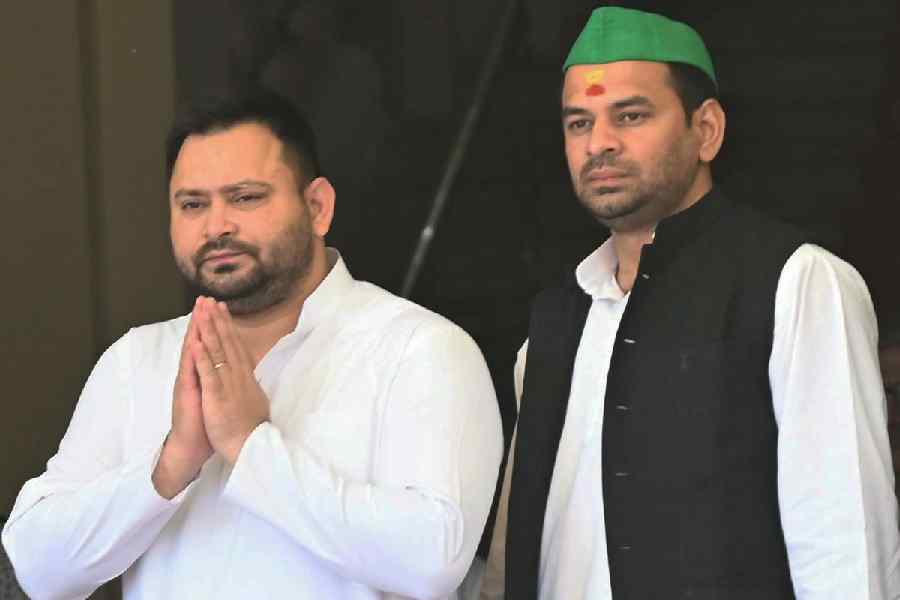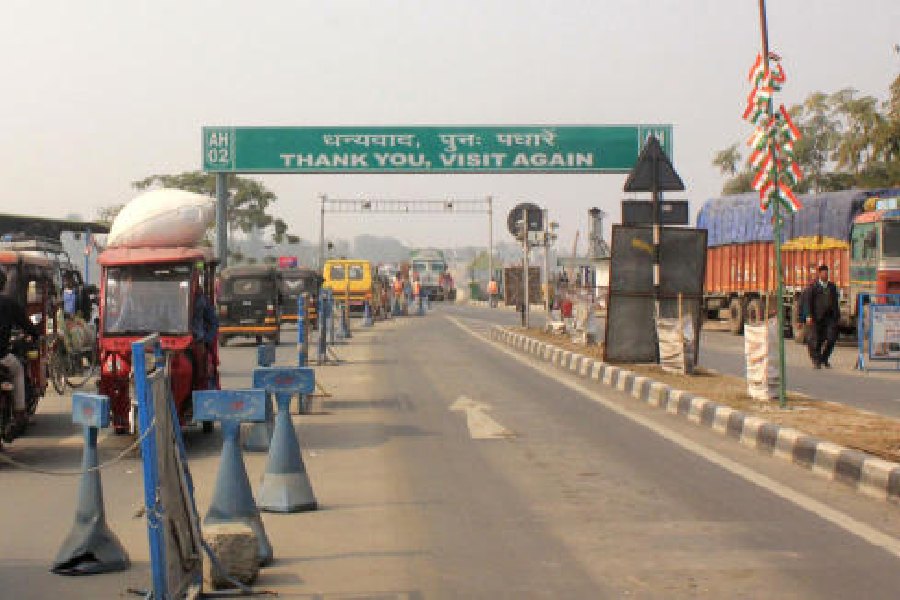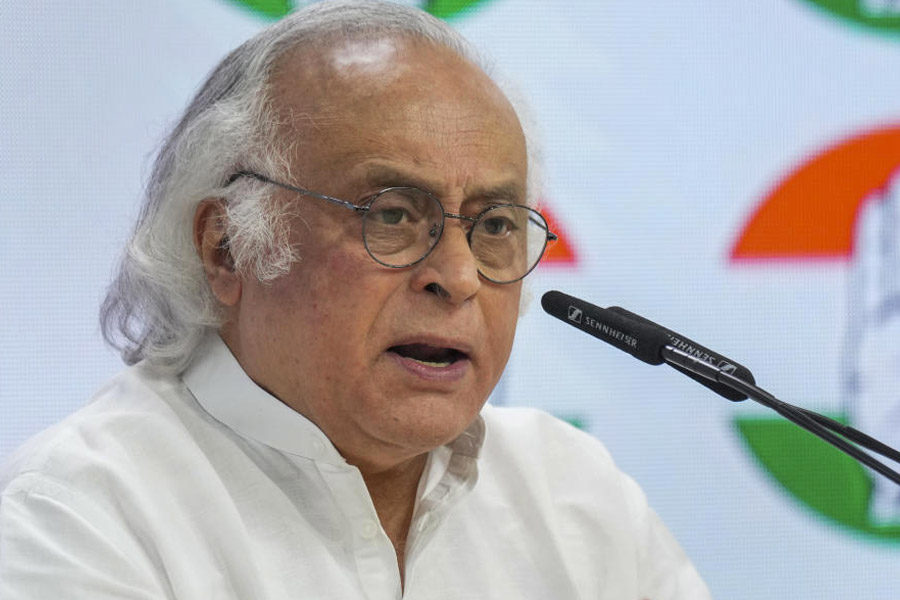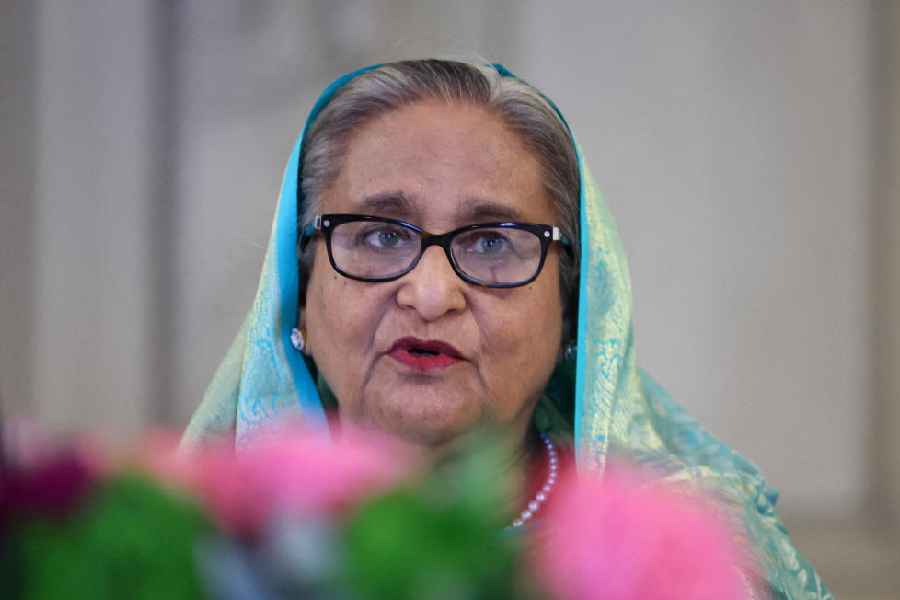 |
| High priest Ashin Thareinda at the Myanmar Buddhist temple in central Calcutta. Picture by Pradip Sanyal |
Bhagwan Dada’s lady love (sung by Chitalkar, also known as composer C. Ramchandra, and Shamsad Begum) piped this evergreen in the black-and-white Patanga: “Mere piya gaye Rangoon/Kiya hai wahan se telephoon/Tumhari yaad satati hai…” Rangoon is now Yangon and Burma is Myanmar.
Till the Sixties, before nationalisation drove away all the people of Indian origin back to their homeland, Myanmar was like a second home for thousands of Indians. Our relations with that land, that gave Eden Gardens its pagoda and the popular khow suey for our palates, were so strong at one time that both our high and popular culture used to bear traces of our encounter with that country famous for its rubies.
Till the late Fifties, Burmese women in their lungis carrying painted parasols were quite a common sight in Calcutta. But after the military takeover, they entered the storehouse of memories of the city’s cosmopolitan past. The rundown Myanmar Buddhist temple at 10A, Eden Hospital Road, is the only visible remnant of Calcutta’s Burmese connection. Amidst the concrete jumble of new offshoots sprouting from the heaps of brick that were once grand houses, the temple looks quite undistinguished and undistinguishable, save for the two vinyl boards announcing the name of this place of worship.
A stockily-built Myanmarese high priest with heavy maroon cloth draped on his bare shoulder unlocks the door. The fresh whitewash cannot conceal the age of this building. It is in urgent need of repairs. The shrine is on the second floor. Tiles gleam on the walls. The altar has sliding glass doors. The marble Buddha is serene. His throne is of intricately carved wood painted gold.
The only permanent resident of this two-storeyed house is high priest Ashin Thareinda, 42, of Hmawbin township, Yangon division. His appointment was made by the All India Burmese Buddhist Sangha Council in Bodh Gaya in 2000. He had come in 1990 to study Pali at Nalanda University. He says that in 1928, a government servant named U San Min had bought the house, and as the marble plaque listing 200 donors says, it used to be the Burma Buddhist Damasala. It was turned into a temple in 1932. In those days, students from Burma used to come to Calcutta to study medicine, and they lived here. The medical college is across the street. Now, about 600 Myanmarese pilgrims stay in the dormitories here every year, on their way to Patna, Bodh Gaya and Lumbini. Ex-Burma residents celebrate new year here on April 17.
The high priest has to maintain the building with the pilgrims’ donations and also provide for himself. He is desperately seeking funds to overhaul the house. But all he can afford, for the moment, is a patch-up job.


